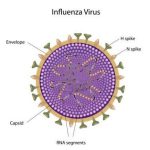
There are no specific physical examination findings associated with influenza. The patient usually appears ill and has fever. A clear nasal discharge is common.
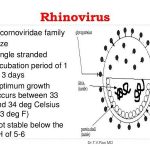
Rhinoviruses are the most frequent cause of the common cold. One hundred two serotypes have been identified by neutralization with specific antisera, and additional strains have been isolated but are not yet typed. Rhinoviruses can be transmitted by two mechanisms: aerosols and direct contact (eg, with contaminated hands or inanimate objects).
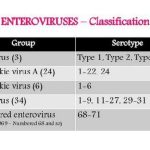
Enteroviruses are one of three types of picornaviruses that cause disease in humans. As the name indicates, picornaviruses are small (pico) ribonucleic acid (RNA) viruses that have a naked capsid structure. The family includes > 230 members divided into five genera but only three—enteroviruses, rhinoviruses, and hepatoviruses (hepatitis A virus)—cause human disease.
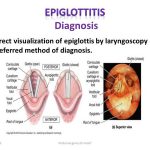
Polio vaccines and global eradication efforts have eliminated poliomyelitis from the Western Hemisphere and are expected to eliminate “wild” polio infections from the world in the near future. However, vaccine-associated cases of polio do occur. Paralytic poliomyelitis is characterized by an asymmetric flaccid paralysis with no sensory loss.
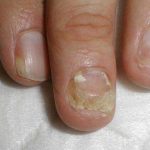
Fungal infection of the nails (onychomycosis) may be caused by a number of dermatophytes as well as by a number of other moulds and Candida species. There is wide geographical and racial variation in the causative agents, but in the UK 85-90% of nail infections are due to dermatophytes and about 5% are due to non-dermatophyte moulds.
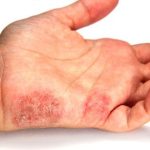
The anthropophilic dermatophytes E. floccosum, T. mentagrophytes var. interdigitate and T. rubrutn are the most common causes of tinea manuum. Less commonly, the condition is caused by zoophilic dermatophytes, such as M. canis and T. verrucosum, or geophilic dermatophytes, such as M. gypseum. Hand infection may be acquired as a result of contact with another person, with an animal, or with soil, either through direct contact, or via a contaminated object such as a towel or gardening tool. Autoinoculation from another site of infection can also occur.
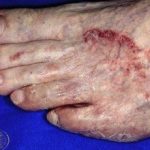
The term tinea pedis is used to refer to dermatophyte infections of the feet. These infections often involve the interdigital spaces, but chronic diffuse desquamation can affect the entire sole. The anthropophilic dermatophytes E. floccosum, T. mentagrophytes var. interdigitale and T. rubrutn are the commonest causes of tinea pedis in the UK and North America.
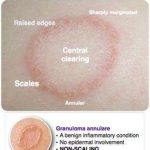
Tinea corporis is caused by E. floccosum and many species of Trichophyton and Microsporum. Infection with anthropophilic species, such as E. floccosum or T. rubrum often follows autoinoculation from another infected body site, such as the feet. Tinea corporis caused by T. tonsurans is sometimes seen in children with tinea capitis and their close contacts. Tinea corporis commonly occurs following contact with infected household pets or farm animals, but occasional cases result from contact with wild mammals or contaminated soil.
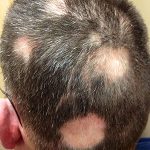
The condition is worldwide in distribution, but is most prevalent in Africa, Asia and southern and eastern Europe, where it is the most common form of dermatophytosis. Improved standards of hygiene and prompt eradication of sporadic infection have led to a marked decline in the incidence of tinea capitis in North America and western Europe.